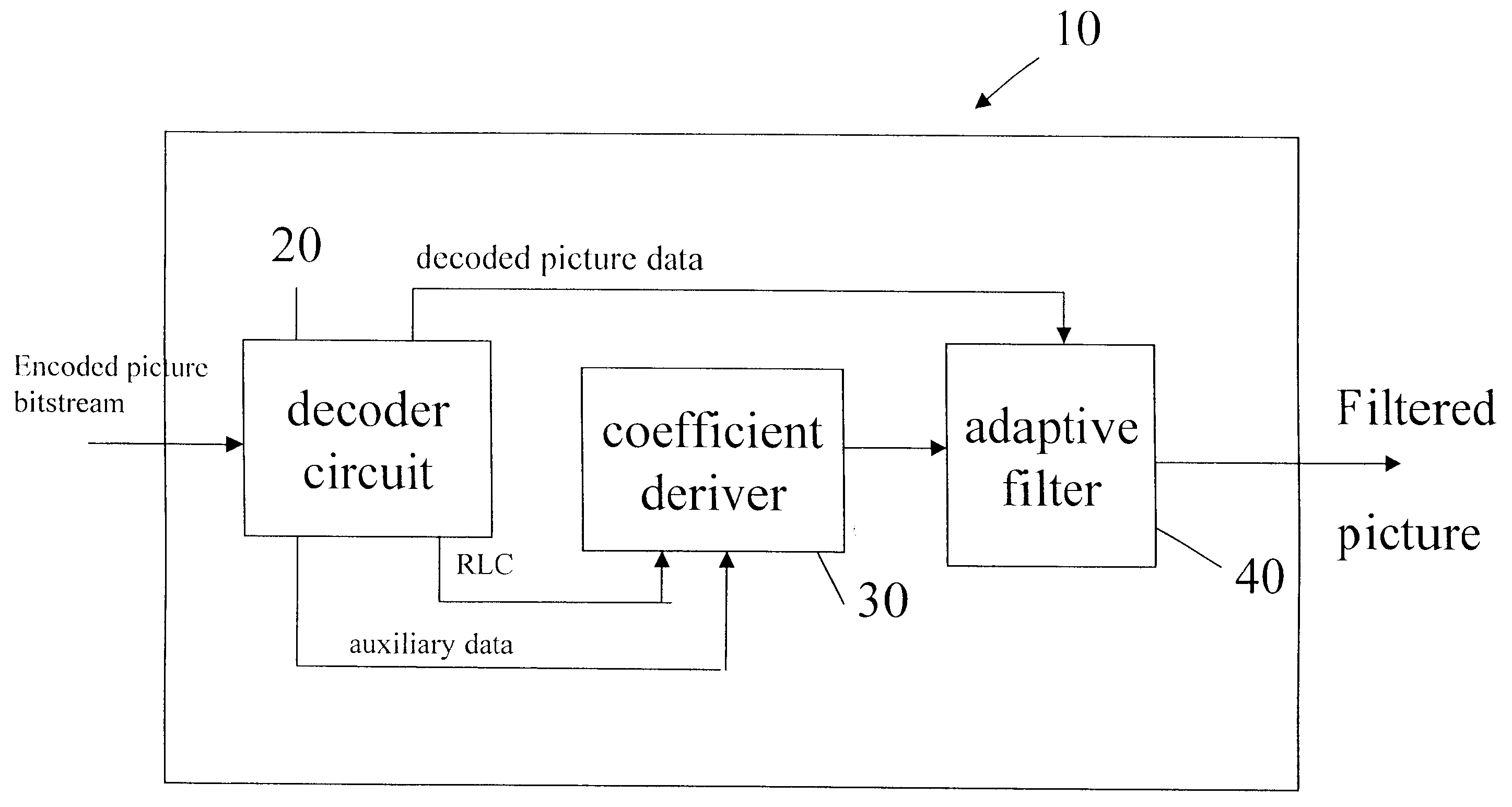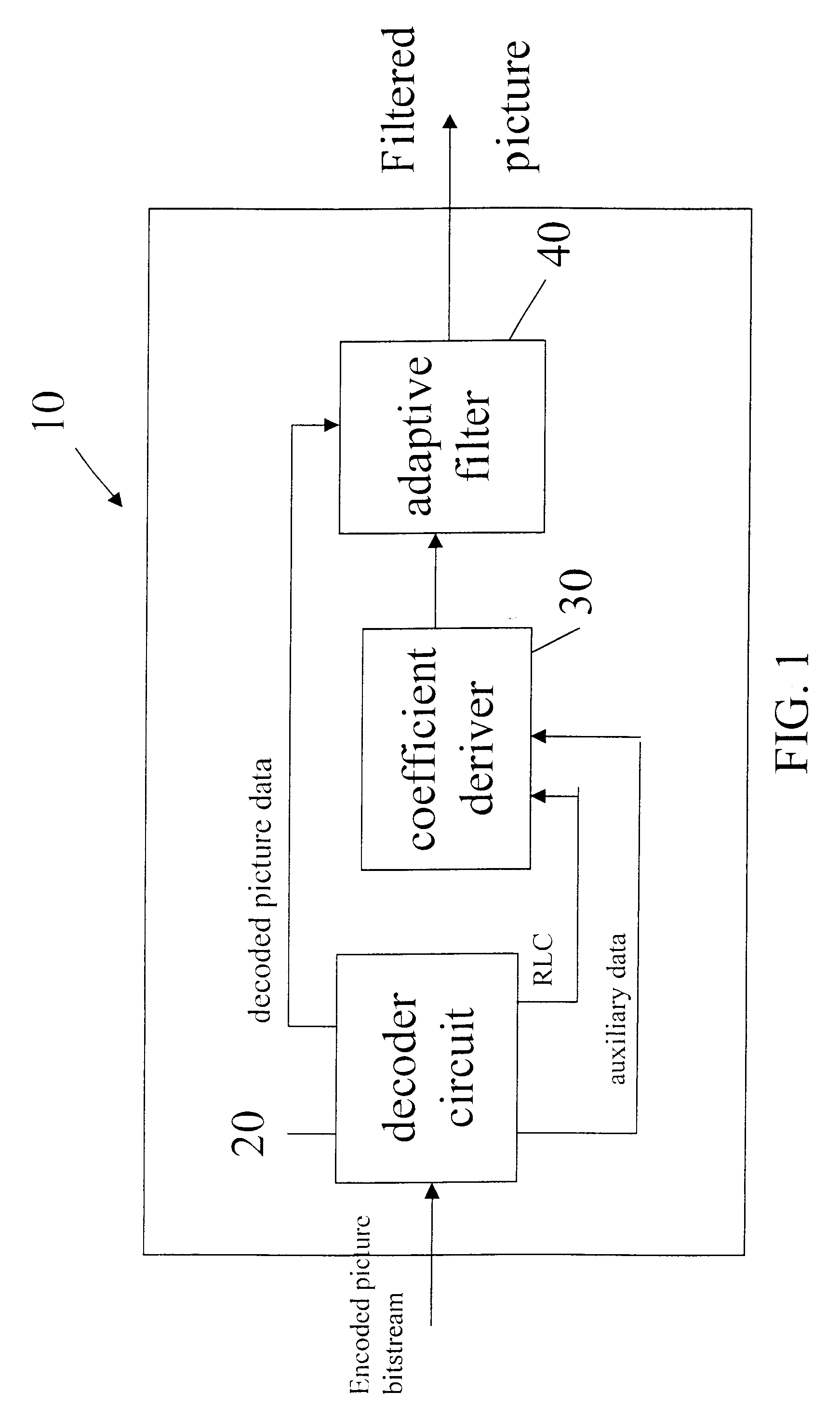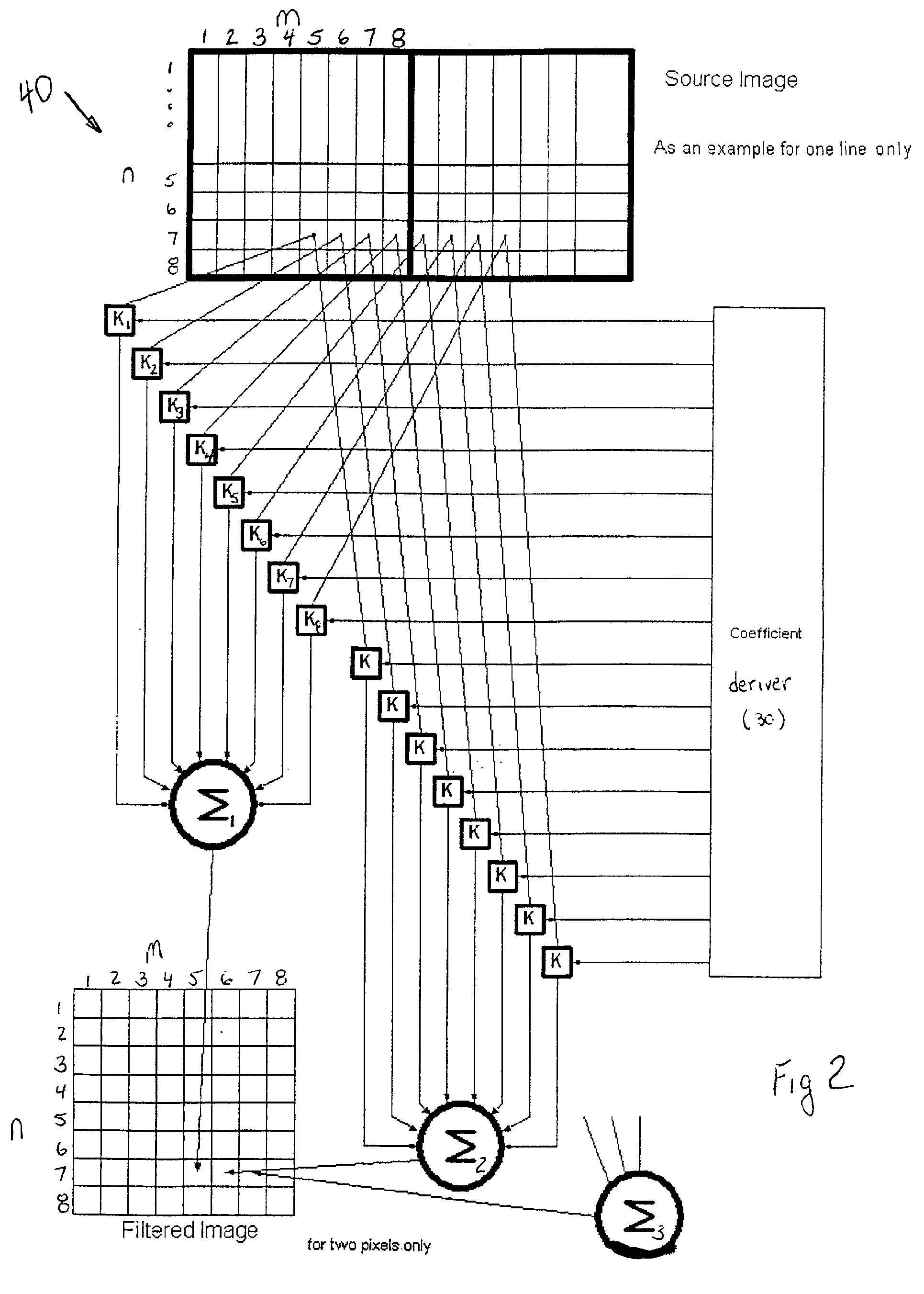Method and apparatus for reducing the "blocky picture" effect in MPEG decoded images
- Summary
- Abstract
- Description
- Claims
- Application Information
AI Technical Summary
Benefits of technology
Problems solved by technology
Method used
Image
Examples
Embodiment Construction
The present invention provides for methods and apparatus for reducing the blockiness in encoded picture data. The present invention permits for the improvement of the perceived image quality by applying an adaptive filtering process, utilizing the run-length codes (RLCs), to the decoded picture data.
In accordance with one embodiment of the present invention, prior to broadcasting compressed picture data, such as but not limited to MPEG video, an encoder is used to generate the encoded video data stream. Such an encoder is well known in the art, and can be for example, similar to the encoder described in the U.S. Pat. No. 5,844,614 or U.S. Pat. No. 5,654,759, the disclosures of which are incorporated by reference as if fully set forth herein. For purposes of completeness, a brief overview of a suitable encoder for use in connection with the present invention shall be disclosed.
In general, the encoding of a digital picture data signal indicating images, by compression thereof, is typi...
PUM
 Login to View More
Login to View More Abstract
Description
Claims
Application Information
 Login to View More
Login to View More - R&D
- Intellectual Property
- Life Sciences
- Materials
- Tech Scout
- Unparalleled Data Quality
- Higher Quality Content
- 60% Fewer Hallucinations
Browse by: Latest US Patents, China's latest patents, Technical Efficacy Thesaurus, Application Domain, Technology Topic, Popular Technical Reports.
© 2025 PatSnap. All rights reserved.Legal|Privacy policy|Modern Slavery Act Transparency Statement|Sitemap|About US| Contact US: help@patsnap.com



